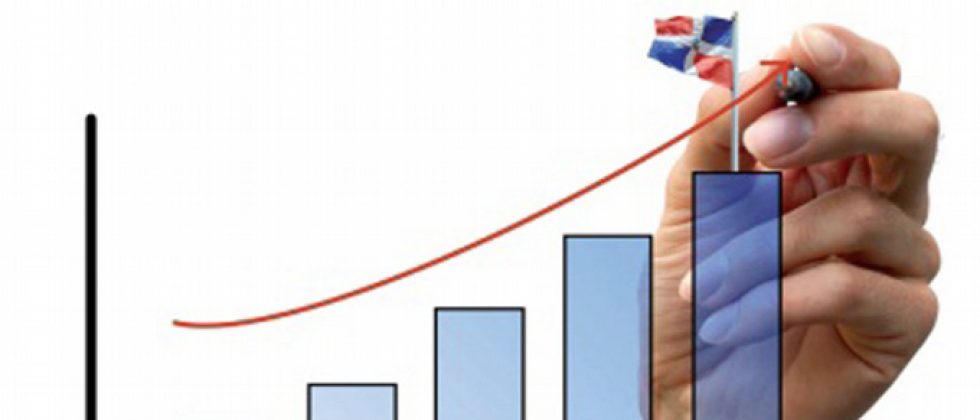news
“Economic Growth, Statistical Carryforward and Manipulation”, an article by Dr. Leonel Fernández
February 14, 2022
In its report on the preliminary results of the Dominican economy during 2021, the Central Bank indicated that the country´s real Gross Domestic Product (GDP) reached a remarkable interannual growth of 12.3% during January-December of the previous year.
Indeed, when comparing the economic growth of 2021 with that of the growth reached in 2020, which was 6.7%, it is logical that the economy rebounded the way it did, as has been highlighted by the institution that guides the country´s monetary policy.
But when the growth experienced in 2021 is compared, instead, with the growth registered in 2019, then the GDP expansion, according to the International Monetary Fund (IMF), was only 4.7%.
This important issue is recognized by the Central Bank in its report. The Bank explains: “GDP growth reached 4.7% in 2021, in comparison to 2019, highlighting a real reactivation of the Dominican economy rather than a statistical rebound.”
The 4.7% registered in economic growth, which is obtained by comparing the results of 2021 with those of 2019, is what is known as organic or genuine growth.
Therefore, there is no reason, in this case, to refer to a statistical rebound, as the Central Bank maliciously states. Where there is a true statistical rebound is with respect to the 12.3% GDP growth, since the point of comparison is with the -6.7% decrease in the economy, experienced in 2020.
By offering this information, that “the Dominican economy will close with a growth of 12.3% in 2021…”, without putting it in its proper context, the Central Bank incurred in a flagrant intellectual dishonesty. The Bank engaged in what could well be considered a gross manipulation of national public opinion.
Statistical Rebound and the ECLAC
In its preliminary balance of the economies of Latin America and the Caribbean during 2020, the Economic Commission for Latin America and the Caribbean (ECLAC) explained that the economic contraction experienced that year – of -6.8% of the GDP – was the most serious in more than a century.
Faced with this catastrophe, the Latin American governments responded in an appropriate manner. They introduced broad monetary and fiscal policies that helped reduce the impact of the crisis.
As a consequence of the application of these public spending expansion policies, ECLAC indicated in its report that in “…2021 a positive GDP growth rate is expected, which fundamentally reflects a statistical rebound…”
With greater clarity and by providing even more detailed data, ECLAC´s Executive Director, Alicia Bárcena, expressed the issue in the following terms when she presented the aforementioned report. She stated:
“The growth dynamics of the region this year (2021), although it responds to improvements in the external conditions and the growing openness of the economies, is basically explained by a very low-comparison base, product of the sharp drop experienced in 2020, which was -6.8%, the biggest since 1900 and the worst performance among all developing regions.”
She also explained: “In all of Latin America, the growth rate is explained by a statistical effect. In the case of South America, we can determine that of the 5.9% growth projected for 2021 “…70% of that number is influenced by a dragging effect, while only 30% of the data is genuine growth.”
During her keynote speech the Director of the United Nations organization that studies and analysis the Latin American economy, also warned of the possibility that once the statistical effect of 2021 fades the growth of the region will return to the levels experienced in 2019.
With this statement, she expressly wished to indicate that for this year, 2022, Latin America and the Caribbean will experience a decrease in the growth rate that would reach a 2.9% average, which contrasts drastically with the high growth rates of 2021, which were determined by the statistical rebound.
Regarding Colombia, for example, the Commission had predicted that this fellow nation would experience a 7.5% economic growth by 2021. Of this, six points, or approximately 80%, would be produced by statistical carryforward.
In Bolivia, the initial projection of a 5% annual growth could be explained in regards to a statistical rebound. A similar situation could occur in Mexico, where the growth projection would be 6.2% and would be driven by an increase in consumer spending, the dynamism of its main trading partner, the United States, the sending of remittances from abroad and, naturally, by a statistical carryforward. This situation would repeat itself throughout the region.
The Manipulation
When carrying out economic analyses, part of the conventional wisdom is to establish the base effect for measuring the growth of a given economy. In other words, the point from which the measurements start influences, because of mathematical reasons, the size or magnitude of growth.
When the comparison base from which one starts is low, there is a danger that a high percentage is more a reflection of the fall suffered than of the dynamism experienced by the reactivation of the economy, as explained by ECLAC´s Executive Director.
This is what has happened throughout the world and, of course, in the Dominican Republic – although the Central Bank has not admitted it – by comparing the high growth rates experienced in 2021 with those of a confined economy, which was the case in 2020.
In this regard, the data offered by the Central Bank in relation to the growth experienced in the month of April 2021 is very striking.
On that occasion, a quite unusual event occurred. According to the country´s monetary control agency, during that particular period the Dominican economy registered an extraordinary expansion of 47.1%, surpassing the percentages experienced during the same time period in 2019 and 2020.
What this information is hiding is that this growth occurred after a tremendous drop, experienced in April 2020, of -29.7%. That, precisely, is what clearly reveals, in an incontrovertible manner, that the situation was a statistical rebound.
They began with a very low base, from a free-fall economy to another undergoing a reactivation process, a situation which necessarily required a fair reading and careful interpretation of the situation in order to try to understand the true meaning of the magnitude of the figures presented.
This is how the national public opinion must have understood it, in spite of the extravagant news. However, no newspaper gave it front-page coverage.
The reason is that similar to the 12.3% growth experienced in 2021, the Central Bank manipulated the information by revealing data that was out of context.
That is the truth, simple and irrefutable. The rest, distortion and pure nonsense.





